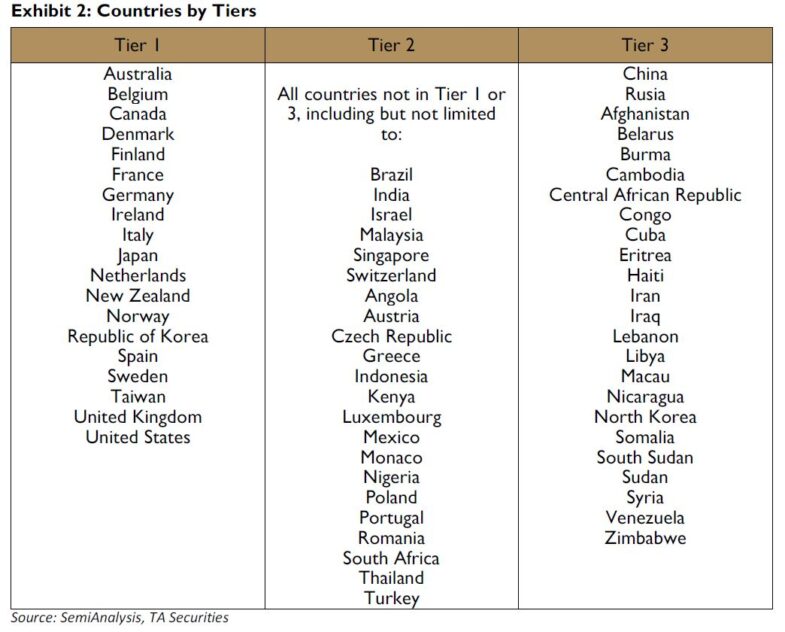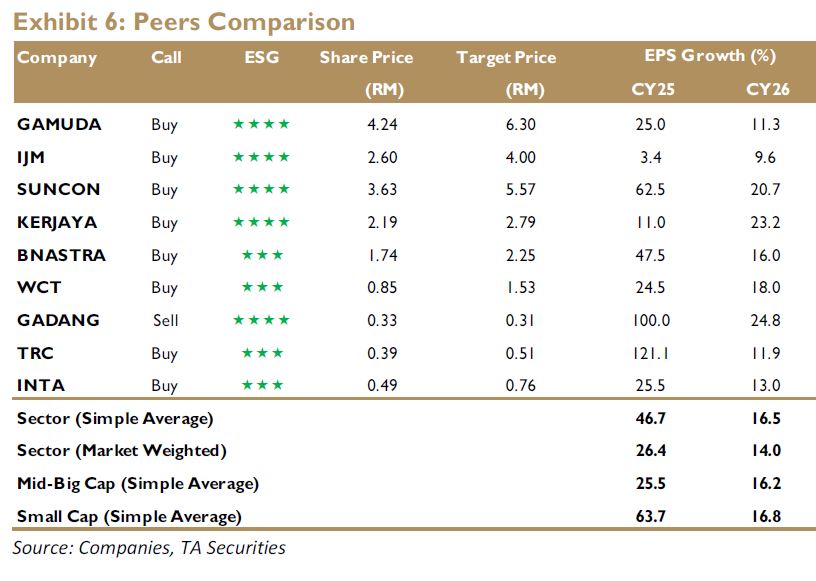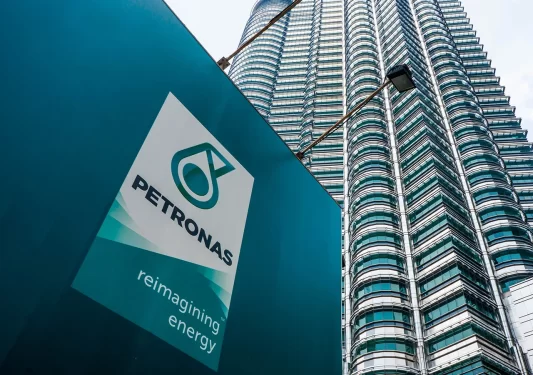ON 13 January, the Biden-Harris administration introduced an Interim Final Rule Titled “Export Control Framework for Artificial Intelligence Diffusion” through the Bureau of Industry and Security.
The policy aims to prioritise the application and development of AI chips within the U.S. while streamlining the export process for trusted partners, including key U.S. hyperscalers such as Microsoft, Google, and Amazon, as well as select approved international providers.
This framework categorises countries into three tiers:
Tier 1: includes the U.S. and 18 allied nations with unrestricted access to advanced AI chips.
Tier 2: covers over 100 other nations with varying export restrictions and caps including a maximum AI chip install base of up to 49,900 H100 equivalent GPUs from 2025 to 2027.
Tier 3: encompasses countries under U.S. arms embargoes, including China, Iran, and North Korea, which are barred from acquiring such technology.

“With a maximum AI chip install base of up to 49,900 H100-equivalent GPUs per Tier-2 country from 2025 to 2027, the growth of data centre (DC) projects in Malaysia could face constraints,” said TA Securities (TA) in the recent Thematic Report.
This limitation may hinder the expansion plans of existing DC players and delay the rollout of new DC projects.
Furthermore, the 7% cap on AI computational power per country and the 25% aggregate cap for all Tier-2 countries impose additional restrictions on the maximum size of DC capacity in Malaysia, depending on the hyperscalers’ total global DC capacity.
That said, research by SemiAnalysis suggests that global AI-driven DC capacity to reach approximately 20GW by 2025 and to triple by 2027.
This significant growth is fuelled by the urgent global demand for hyperscalers to scale up their DC capacity to accommodate large-scale cloud storage needs, particularly driven by the rise of AI-intensive mobile and desktop applications and software.

“Given these projections, we believe the impact from this new policy could be minimal and remain optimistic about the robustness of DC projects in the pipeline,” said TA.
The 7% cap of the projected 60GW global DC capacity by 2027 contributed by mainly US companies translates to an allocation of 4.2GW per Tier-2 country.
In this context, Malaysia has substantial room for growth, considering its total DC capacity stood at 504.8MW as of the end of 2024, according to the Malaysian Investment Development Authority (MIDA).
According to TNB’s disclosure as of September 2024, it has entered into electricity supply agreements (ESAs) for six DC projects with a combined capacity of 1.1GW, while an additional 2.1GW across 15 DC projects remains under the supply-application stage, pending finalisation.
Using the DC 1 project in Elmina Business Park, with a capacity of approximately 80MW, as a benchmark, the total project value for a new DC is estimated at around USD2bil (equivalent to RM9bil) per 100MW, with construction costs typically accounting for 15–20% of this total value.
Based on these projections, we estimate that the collective power supply of 3.2GW could potentially contribute a total construction value of RM57.6bil to the pipeline.

“All in all, we reiterate our overweight call on the construction sector, as we believe the headwinds arising from the U.S.’s new restrictions are likely to be temporary, with the sector’s long term prospects remaining intact,” said TA.
With the new rules set to take full effect in April 2025, the upcoming administration under President Trump has time to gather feedback from industry experts and stakeholders.
This could lead to potential adjustments aimed at alleviating the restrictions and ensuring sustainable growth in the DC sector.
Key downside risks include:
(i) a narrower quota than the initial 7% of total computational power per country in each Tier-2 country.
(ii) delays in the rollout of new DC projects by hyperscalers.
(iii) more stringent regulations and capping imposed by the U.S., including the potential suspension of AI chip exports to Malaysia. —Jan 20, 2025
Main image: shutterstock









